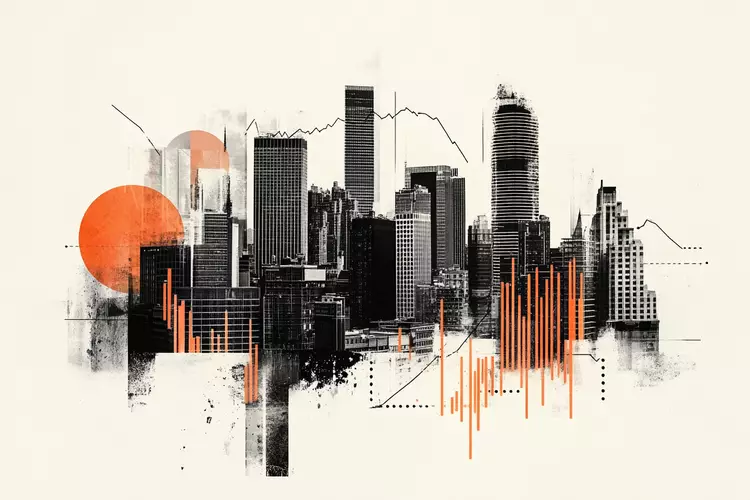On Friday, the Dow Jones Industrial Average (DJIA) experienced a shocking plunge, dropping nearly 1,000 points—a dramatic response that rattled investors. This swift downturn followed Israel’s unexpected military strikes on Iran, amplifying tensions in an already volatile geopolitical environment. With this upheaval, the week’s exuberant gains vanished, interrupting a four-day winning streak that had many stakeholders optimistic about long-term strategies. Amidst the uncertainty, this moment serves as a crucial reminder of how geopolitical events can swiftly alter market dynamics and investor sentiment.
The Ripple of Consumer Sentiment
Despite the turbulence, there was a glimmer of resilience in the form of the University of Michigan’s Consumer Sentiment Index for June, which exceeded expectations and recorded a notable rebound to 60.5. This uplifting figure stands in stark contrast to the anticipated median of 53.5, indicating that consumer confidence may be resilient even amidst precarious global situations. Notably, a decline in inflation expectations—from 6.6% to 5.1% over the year—adds another layer of complexity, suggesting that consumers are becoming less anxious about rising prices and might continue to feel empowered to spend.
Market analysts take heed of these indicators since consumer sentiment is a cornerstone of economic vitality. High consumer confidence usually translates into increased spending, a vital engine propelling the economy forward. Investors and policymakers need to interpret this data judiciously. While certain concerns loom large, the underlying sentiment may indicate a healthier economic backdrop.
Inflation and Interest Rates: The Federal Reserve’s Tightrope
In light of these developments, all eyes are now on the Federal Reserve, especially with their upcoming monetary policy meeting on the horizon. The Fed appears poised to maintain a cautious approach, refraining from abrupt changes while anticipating the repercussions of varied trade policies stemming from the Trump administration’s unpredictable strategies. Analysts are closely monitoring the evolving landscape—particularly after the recent series of inflation indicators, which have led the markets to price in a 70% probability of a rate cut in September. Should this materialize, the subsequent cuts might further enhance market momentum in subsequent months, although structural concerns persist.
What’s fascinating here is the dance between economic indicators and the stock market’s directional opportunities. As the Dow wavers above its 200-day Exponential Moving Average, technical analysts are observing whether this established threshold could represent a point of resilience or merely a temporary façade over deeper vulnerabilities. The evaluation of technical indicators alongside economic sentiment could be pivotal for investors now navigating choppy waters.
Positioning Risks and Upper Bound Analysis
For investors holding positions in the Dow, the swift contraction poses significant challenges to those who entered the market during the tech-fueled rallies. After four days of optimistic trading, the breach back into consolidation reflects a complex decision-making period where emotional responses might cloud judgment. The impending action over the next several weeks—further rate adjustments and consumer spending behavior—will likely yield critical insights into the market’s resilience.
Nevertheless, while the Dow faces immediate tests, the formation of a bullish cross between the 50-day and 200-day EMAs could indicative of a potential resurgence if prices reclaim ground, ideally surpassing resistance levels around 42,000. This interplay of technical analysis and real-time events calls for a nimble posture, challenging investors to adapt strategies in a landscape riddled with uncertainties.
As the market reckons with geopolitical strife and evolving economic indicators, the equilibrium between caution and opportunity will dictate the short-term trading landscape. Investors must adopt a multidisciplinary lens, evaluating sentiment, economic metrics, and technical indicators while maintaining a keen awareness of the worldwide stage. Such an adaptive approach could well become the definitive asset in a landscape that may very well be as unpredictable as the strikes that sparked this latest downturn.

